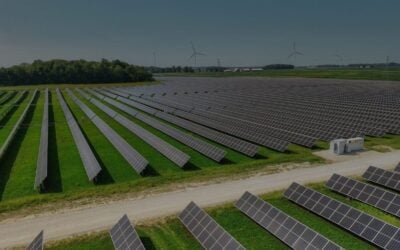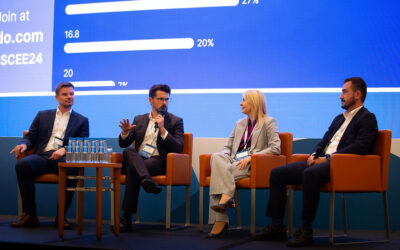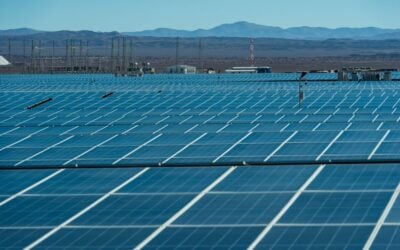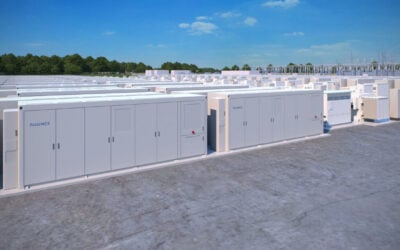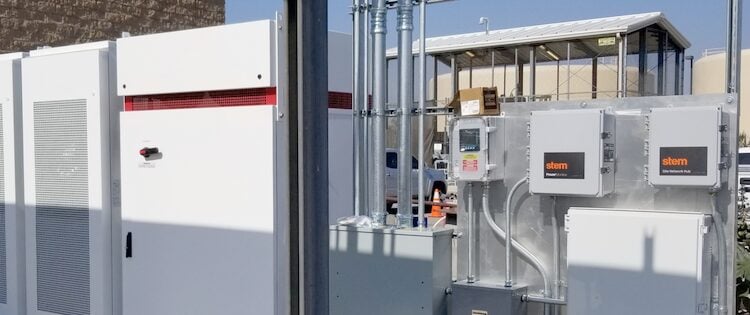
Stem Inc. (Stem) has had a profitable start to the year as the company continues to pivot away from battery storage hardware into energy storage and solar software and services.
Stem, one of the pioneers of the US commercial and industrial (C&I) battery energy storage system (BESS) space, reported Q1 2025 GAAP gross profit of US$10.5 million, and GAAP gross margin of 32% in its financial results release earlier this week (29 April).
This was a considerable improvement on Q1 2024’s GAAP gross profit figures of US$-24.2 million and GAAP gross margin of 24%, and although adjusted EBITDA was still a loss of US$4.6 million, this was again an improvement from the same quarter last year, when the company reported a loss of US$12.2 million.
Revenue was up 27% year-on-year from US$25.5 million to US$32.5 million, and annual recurring revenue (ARR), was up 8% from the end of the previous quarter and 26% year-on-year to US$56.9 million.
Try Premium for just $1
- Full premium access for the first month at only $1
- Converts to an annual rate after 30 days unless cancelled
- Cancel anytime during the trial period
Premium Benefits
- Expert industry analysis and interviews
- Digital access to PV Tech Power journal
- Exclusive event discounts
Or get the full Premium subscription right away
Or continue reading this article for free
In prepared remarks, Stem Inc. CEO Arun Narayan attributed the improved position to a combination of growth in revenue from software, namely Stem’s focus on its PowerTrack clean energy asset management tool, and reduction in operating expenses (Opex), including around US$30 million savings through workforce reduction.
NYSE listing warning, change of CEO at Stem amid strategy shift
Although the company described itself as the “first publicly-traded smart energy storage company” when its shares listed on the New York Stock Exchange (NYSE) in April 2021 after a special purpose acquisition company (SPAC) merger, it announced a wholesale turnaround in strategy last year.
The company’s background is in the C&I energy storage market of California, where it began deploying lithium-ion (Li-ion) systems for customers on an energy storage-as-a-service business model, reducing electricity bills through demand charge-based peak shaving, and earning revenues through grid services.
It had expanded into other markets across the US and internationally, including small front-of-the-meter (FTM) solar-plus-storage systems in Massachusetts, serving customers with third-party battery storage and its own software and hardware solutions.
However, it had always said its USP was with its software-driven controls and optimisation of clean energy assets, and the company leaned further into this area, acquiring a solar PV asset management company, Also Energy, in 2022.
Longstanding CEO John Carrington left the company as Stem failed to deliver on an EBITDA-positive guidance for 2024, and it received a NYSE continued listings warning as its shares fell below the required threshold.
Under incoming CEO Narayanan, it accelerated its pivot to focus on its higher-margin software and services from Q4 2024 and although the decline in battery hardware sales led to a 69% fall in annual revenues, the CEO said last quarter that the updated strategy “is designed to drive sustained, scalable growth in recurring software and services revenue.”
In an earnings call to explain results, Justin Clare, an analyst from Roth Capital, asked company leadership about the expected impact of US tariffs on Stem’s energy storage business, especially for customers “that might not have batteries in the US right now.”
CFO Doran Hole said that OEM battery storage hardware sales “are not a significant component of the business going forward,” with just US$35 million in revenue for the business line reported in Q1.
Stem is in “close dialogue” with the three BESS OEM providers it currently sources with, including US and Chinese companies. However, the “negligible” direct impact of tariffs could be passed onto customers without too much concern, Hole said.
Asked by Roth Capital’s Justin Clare what the impact of tariffs might be on customer demand and ability to secure software and services contracts, the CFO said storage contracts for 2025 would be largely driven by contracted backlog, and that for solar PV, the company had not seen a noticeable decrease in customer activity as yet.

